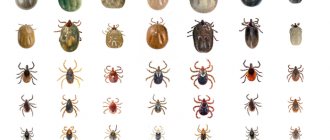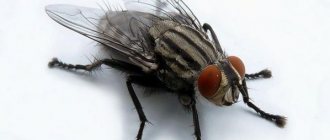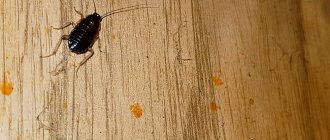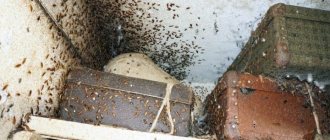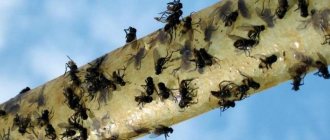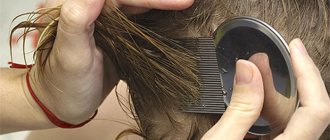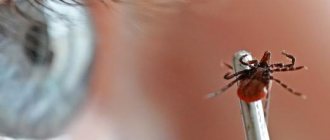One of the most numerous and ancient groups of arthropods that arose during the time of dinosaurs and has survived to this day - mites, has more than 50 thousand species. Even acarologists, scientists who study this subclass, don’t know everything about ticks. Many species have been found and described, but due to the inaccessibility of arachnid habitats, little is known about their lifestyle and importance to ecosystems. Species that live near humans and often parasitize them have been studied in more detail.
Who or what is a tick
Small, six-legged and crawling. Who is this? Definitely some kind of insect. In fact, when answering the question whether a tick is an insect or an animal, you need to choose the second option. These peculiar creatures belong to the animal world and are arachnids. Unlike spiders, there are no poisonous mites. That is, they do not use the secretion of their salivary glands to kill the victim.
The Latin name for ticks is Acari. The name refers to the entire subclass. And the branch of zoology that studies these arthropods is called “acarology”.
Interesting!
Ticks are not insects, but traditionally many acarologists are members of the Russian Entomological Society.
People often classify any small multi-legged life form as insects, so this confusion will continue in the future. The Akari subclass is also similar to insects in stages of development that are usually absent in more developed forms of life. There are four such stages in arthropods:
- egg;
- larva;
- nymph;
- adult.
Depending on the type of tick, the nymph also has from 1 to 3 stages of development.
Why are ticks dangerous?
A tick itself is nothing more than a tick, and until recently people went into the forest without any fear or trepidation. Today, tourists, mushroom pickers and just vacationers are afraid not of ticks, but of tick-borne encephalitis - a disease that can be fatal. By the way, the encephalitis tick is not a separate type of tick and not the name of specific representatives of these arthropods. This is a tick infected with the encephalitis virus. When and why did the common forest tick suddenly become so dangerous and where did the deadly virus come from?
VERSION
There is an opinion that the encephalitis tick is a real bacteriological weapon that the Japanese used against the Soviet Union. Tests of the new “bomb” took place in the Far East in the 20-30s. This region is still breaking all records for the number of cases of encephalitis, and the mortality rate from this disease not so long ago there was 30% of the number of cases, in contrast to the European part of Russia, where deaths were ten times less common and amounted to 1-3%.
The modern ixodid tick can be a vessel for a number of infections dangerous to humans and a potential health threat. In addition to encephalitis, ticks are carriers of such dangerous diseases as:
- Lyme borreliosis;
- tick-borne encephalitis;
- epilepsy and hyperkinesis;
- arthritis;
- nephritis;
- indigestion;
- pneumonia or pulmonary hemorrhage;
- blood pressure surges and arrhythmia.
The bite of even an uninfected tick is dangerous, since wounds from penetration of the proboscis can additionally become infected with pathogens from the surface of the skin or from the air. Such damage does not heal for a long time and even festers. Any bite of the most harmless parasite is fraught with allergic reactions in people with sensitive skin and especially young children. Therefore, when going to the forest, it is better to take the necessary safety measures to avoid tick bites and their possible consequences. And on your territory - a personal plot, it is better to carry out disinfestation ahead of time from ticks, mosquitoes and other insects.
Egg
Under a microscope, mite eggs resemble fish eggs. This is a large cell, covered with a soft membrane and containing the yolk, cytoplasm and nucleus. The outer shell can be smooth or ribbed. The eggs have different colors and two shells: the outer one is dense, and the inner yolk is thin. The shape of the egg can be:
- round;
- flattened;
- elongated;
- oval.
Each type of tick has its own specific egg shape.
The size of the egg relative to the body length of the mature female is very large. Typically the egg is larger than the last abdominal segment. After the eggs mature, the female lays them in a secluded, damp place.
Reproduction of ticks
Because of this, some species of ticks have developed a very original method of viviparity: postmortem. With this method, after the eggs ripen by autumn, the female does not lay eggs, but dies. The eggs remain overwintering in the female's body. In the spring, the larvae hatch and eat their way out into the wild. One of the reasons why ticks die is procreation. The uniqueness of this method of reproduction, according to experts, arose from the fact that the eggs are too large to be laid without the death of the female.
Interesting!
In two species: bread mites and pot-bellied mites, true viviparity is observed.
Ixodid ticks
Ticks are often called insects, but they are not. Ticks have four pairs of legs, while insects have three; Ticks do not have wings, but most insects do. Mites are very diverse: some of them are quite harmless, others harm plants, and others are so small and light that their particles float along with apartment dust, causing allergies. Several groups of ticks have adapted to parasitize humans and animals. Scabies itch feeds throughout its life on the epidermis of the skin, and iron mites settle in the hair follicles of human skin. The most dangerous ticks for humans and animals are ixodid ticks, which are found on all continents in various landscapes and feed on the blood of animals and people. It is important that the saliva of these ticks contains pathogens of dangerous diseases. Two representatives of this group, taiga and forest ticks, belonging to the same genus (Latin genus name Ixodes), are widespread in the Russian Federation and are of great epidemiological importance.
The taiga tick (Latin name Ixodes persulcatus) is often found in the European and Asian parts of Russia. Its numbers are especially high in the Urals, Siberia, and the Far East. The forest tick (Latin name Ixodes ricinus) is systematically and ecologically close to the taiga tick (the difference between them can only be determined by a specialist), but is distributed mainly in Europe, including in the northwestern and central parts of Russia, including the Moscow region. Both species prefer moderately moist coniferous-deciduous forests, but are often found in forested areas of cities and in summer cottages. Therefore, it is necessary to carry out acaricidal treatment of the area against ticks using modern means. Females and males attack humans in early spring, as soon as the snow melts. There are especially many of them in May - June. In July there are gradually fewer ticks, and in August they are very rare. The forest tick, in contrast to the taiga tick, is characterized by two increases in numbers: a relatively high spring-summer and a lower one in early autumn. It should be noted that, despite the fact that in August-September there are significantly fewer ticks, there are quite a lot of cases of ticks attacking people, since during this period people often go into the forest to pick berries and mushrooms.
Briefly about the biology of these similar two species of ticks. The size of the female taiga tick is 3 - 5 mm, the body is reddish, oval, flattened, in front there is a cone-shaped dark protrusion, which many call the tick's head or proboscis. But in fact, these are the mouth parts of the tick, and its brain is located in the center of the body. Males of taiga and forest ticks are much smaller than females and darker. Having climbed onto a blade of grass, the tick assumes a waiting position: it holds onto the plant with three pairs of legs, and puts the fourth, front leg forward and moves it in different directions, trying to sense the presence of a warm-blooded creature. During this period, the main thing for the tick is to drink blood, which the female needs for the development of eggs. As soon as you get close to an animal or a person, it clings to the skin, fur, clothing and imperceptibly crawls up until it finds a secluded place, usually under clothing, to cling to the body. In humans, this is most often the back, armpits, and groin; in animals, it is the head, neck, and groin. A tick always crawls upward against the gravity of the Earth. The tick's saliva, which contains pathogens, enters the victim's body. Ticks insert only the central part of the proboscis into the body, but it can be very difficult to detach them, especially the female. The female sucks so much blood that her weight increases by more than 100 times. She becomes like a gray bean with a proboscis and four pairs of legs. Males are only slightly attached to the body and suck only a little blood, which, however, does not prevent them from transmitting pathogens of dangerous infections. Having had enough blood for 5-6 days, the female falls from the animal onto the forest floor, lays several thousand eggs there and dies.
At the end of summer, small (about 1 mm) larvae hatch from the eggs, which overwinter in the forest floor, and in the spring of next year they crawl to the surface and attack small rodents. At the end of summer, the shell of the larva, engorged with blood, bursts and a nymph emerges from it: it is larger than the larva, but smaller than an adult tick. After overwintering, in the spring the nymphs crawl onto blades of grass and attack small and medium-sized animals, rarely people. By the end of summer, young adult ticks emerge from the nymphs. Thus, the entire development cycle from female to female of the new generation takes at least 3 years. For successful development, mites at all stages require certain conditions of temperature and humidity. Ticks are usually absent from areas where they lack warmth for development (northern regions of Russia) or unsuitable moisture conditions (wetlands or open dry spaces). A large number of adult ticks, as well as eggs, larvae, and nymphs die from excessive dryness or moisture, from insect enemies, or because the prey animal was not found. However, due to the high fertility of females, ticks are not yet in danger of extinction.
Taiga and forest ticks are the main carriers of tick-borne encephalitis (TBE, tick-borne viral encephalitis) and ixodid tick-borne borreliosis (TBB, tick-borne borreliosis, Lyme disease, Lyme borreliosis). The Federal Service annually prepares a list of areas endemic and therefore dangerous for tick-borne encephalitis. We can assume that if there are these types of ticks on the territory, then there is a danger of infection. Along with the TBE virus, pathogens of ITB, ehrlichiosis and other diseases can enter the bloodstream with the saliva of ticks of the genus Ixodes. The vaccine exists only against TBE, but there are no vaccinations against other diseases whose pathogens are transmitted by ixodid ticks. In recent years, the number of cases of ICD has exceeded the number of cases of TBE. Every person should know how to prevent tick bites. It’s better not to put yourself at risk of getting sick than to pay for your health.
Nymph
Not all types of ticks go through all three stages in their development. Three instars are present in ixodid and argasid ticks. Sarcoptoid and teranichidae pass through the 1st and 3rd instars. Thrombidiform mites pass through the first two instars. Each age has its own name:
- protonymph;
- deutonymph;
- Tritonymph.
The protonymph already has 4 pairs of legs, which still have very few setae. Also at this stage, a genital opening and 2 genital setae with a pair of genital tentacles appear.
In deutonymphs, the number of setae on the tarsi increases. 6 genital setae and 4 genital tentacles appear.
Tritonymph continues to acquire genital tentacles (already 3 pairs) and setae. The number of tactile bristles on the legs and body surface increases. If you look at the images of all three forms, you can see that the anatomy of the third instar nymph is almost no different from the morphology of ticks.
Sexually mature individual
Ticks
The structure of a tick is usually considered using the example of ixodid ticks as the most common in the world. This group is the most dangerous.
External structure
The tick usually has an oblong body, where the thorax and abdomen are fused together. Hungry individuals are flat above and below. Well-fed females resemble a leathery pouch. The tick's "skin" is actually a chitinous cuticle. On the back of arthropods, a compacted cuticle forms a protective shield. In females this shield is located only on the front part of the body; in males it covers the entire dorsal part. Under the cuticle are the internal organs and muscles of bloodsuckers.
Interesting!
Some species of ixodids also have scutes on the underside of the body.
In the photo of the tick under a microscope you can see the lateral appendages of the arachnid. In many species, the length of the appendages is so different that it is often impossible to understand how many legs a tick has. But all species of these animals have only 4 pairs of legs. What may appear to be the front legs are actually the chelicerae and pedipalps of the tick, which are part of the structure of the mouth apparatus.
On a note!
Chelicerae and palps in ticks also belong to the limbs. These limbs may once have been another pair of legs, but today they are included in the mechanism of the oral apparatus.
Head
The head is so small that the proboscis seems attached directly to the body. The piercing-sucking mouthparts of the tick have changed significantly compared to the gnawing apparatus. The tick's proboscis has a hexagonal or rectangular base. The structure of the proboscis is quite complex:
- chelicerae;
- pedipalps;
- hypostome.
The latter in ixodids is equipped with teeth that help to stay on the victim. Chelicerae in some species of arthropods have turned into a kind of scissors. The sucking ones have fused into a hollow stylophoran tube. Stylophore – protection for stylets formed by modified cheliceral fingers. In bloodsuckers, these “fingers” are transformed into a tube through which blood enters the digestive tract.
On a note!
The pedipalps (palps) have only an auxiliary value and are often reduced.
Legs
The adult has 4 pairs, the larva has three. The legs of the mite are homologous to the limbs of insects:
- pelvis;
- swivel;
- hip;
- knee;
- shin;
- paw.
Since the tick clings to the victim first with its front pair of legs, the legs of predatory and parasitic species are equipped with hooks and suction cups that help to stay on the animal.
Appearance of a tick
In most species of ticks, the pelvic part is motionless and fused with the body. Only primitive species retained mobility of the pelvis. Given the microscopic size of the objects of study, it is possible to examine the segments on the legs only through a microscope under high magnification. A close-up illustration of the arachnid’s legs shows that the segments are very similar and it is very difficult to distinguish them from each other.
Throughout its life, a tick's limbs may change. The main anatomical change occurs in the hind limbs. In predatory species they are curved and look like pincers, with the help of which the arthropod is held on the victim. Leading a “calm” parasitic lifestyle of scabies, the legs are thickened, shortened and have powerful suckers. Tetranych mites have glands on their legs that secrete a sticky liquid that helps them move along smooth surfaces.
Internal systems
The diagram shows an dissected female ixodid tick that has drunk blood, indicating the purpose of the internal organs depicted.
The internal life support systems include digestive and respiratory. The circulatory system of ticks is not developed. The analogue of the heart muscle is located on the back and has an oval shape. The aorta comes off from it. The vascular system is not developed, and the blood - a white liquid in the tick - pours into the body cavity.
The digestive system is represented by:
- mouth opening;
- two salivary glands;
- pharynx;
- esophagus;
- intestines;
- anus.
The excretory organs of mites include not only the latter, but also several more. The intestines have a more complex structure:
- midgut with several lateral blind branches;
- small intestine;
- hindgut.
Adjacent to the hindgut is the rectal bladder, which is one of the excretory organs.
The excretory organs, in addition to the rectal bladder, include the salivary glands located in the mouth. Salivary glands are needed by parasites to store an anesthetic secretion, which is used for injection when piercing the skin with the proboscis.
Important!
Thanks to the secretion of the salivary glands, the bite of an arthropod is invisible to the victim.
The rectal bladder is a repository for waste products, as it receives digestion products and dead cells of the midgut. Pathogens found in the intestines also come here. For this reason, tick feces can also be hazardous to health.
Respiratory system
Tick bite
When a tick bites into the skin, it breathes not through the anus, but through the respiratory openings - stigmata on the hind legs. When inhaled, air enters the trachea - thin tubes running along the entire body of the arthropod. The stigmata of ticks are protected by special organs called peritremes. In ixodids, peritremes are plates that are adjacent to the stigmas from the sides and behind. Other groups have tubes of varying degrees of length and shape.
The respiratory system of this subclass of arthropods is very poorly studied. The question of what a tick breathes actually remains open. If we talk about the respiratory organs, then these are the trachea. If we consider the composition of gases, the needs of arthropods have not yet been studied. There is a group of granary mites that can live at a CO₂ concentration of 30%.
How a tick bites, its life cycle
Having settled on the animal, the tick chooses a place to feed. In most cases, this is the area of the head and neck, where the animal cannot reach with its teeth and destroy the parasite. In humans, attached parasites are usually found in the armpits, groin area and scalp. Then it plunges its mouth parts (the so-called proboscis) into the skin and, cutting through it, reaches the subcutaneous blood vessels, from where it sucks blood. The teeth on the proboscis, directed backwards, and the first portion of saliva, which quickly hardens and glues the oral organs to the skin, like cement, help it securely gain a foothold.
Female ticks feed for about 6 days, absorbing an incredible amount of blood, a well-fed female becomes the size of the phalanx of the little finger, her integument acquires a dirty gray color with a metallic tint, and her weight increases by more than a hundred times compared to the weight of a hungry individual.
Males attach themselves for a short time in order to replenish the supply of nutrients and water in the body; they are mainly busy searching for feeding females with whom they mate.
Development cycle of ticks. In May-June, having engorged itself with blood, the female lays 1.5 - 2.5 thousand eggs, from which, a few weeks later, larvae hatch, they are no larger than a poppy seed and have only three pairs of legs.
The larvae attack small forest animals and birds, sucking blood for 3-4 days, then leave their hosts and go to the forest floor. There they molt, turning into the next phase of development - nymphs, which are larger and already have four pairs of limbs.
Having overwintered, the nymphs go out to “hunt” in the same way, but choose larger victims: squirrels, chipmunks, hares, hedgehogs. After a year, the engorged nymph turns into either a female or a male.
Thus, the development cycle of a tick lasts at least three years, and can drag on for four to five years. During this time, ticks feed only three times, and out of thousands of larvae, only a few dozen adult individuals emerge; the rest fail to survive.
are dangerous to humans , while larvae and nymphs pose no threat.
up
A Little-Known Tick Threat
The information that ticks are carriers of dangerous infectious diseases is known to everyone today. But there is also medical significance in the fact that this group of arthropods can be carriers of other parasites.
The question of which parasite has a tick as its intermediate host is of little concern to the average person. And this is correct, since the parasites are quite exotic. These are worms.
There are two types of worms that can cause inermicapsiferosis and berthiellosis in humans. The final hosts of worms are rodents and rabbits in the first case and monkeys in the second. A person becomes infected with these worms by accidentally ingesting a tick. Disease prevention has not been studied in medicine.
What should I do if bitten by a tick
An initial consultation can always be obtained by calling 03.
To remove the tick, you will most likely be sent to the local SES or regional emergency room.
It should be borne in mind that the likelihood of contracting tick-borne encephalitis depends on the amount of virus penetrating during a tick “bite” (that is, the time during which the tick was in an attached state); removing the embedded parasite is an urgent matter!
If you do not have the opportunity to seek help from a medical specialist. institution, you will have to remove the tick yourself.
When removing a tick yourself, follow these recommendations: A strong thread is tied into a knot as close to the tick’s proboscis as possible, and the tick is removed by pulling it up. Sudden movements are not allowed.
If, when removing the tick, its head, which looks like a black dot, comes off, the suction site is wiped with cotton wool or a bandage moistened with alcohol, and then the head is removed with a sterile needle (previously calcined in a fire). Just like you remove an ordinary splinter.
Removing a tick must be done with caution, without squeezing its body with your hands, since this may squeeze the contents of the tick along with pathogens into the wound. It is important not to tear the tick when removing it - the remaining part in the skin can cause inflammation and suppuration. It is worth considering that when the head of the tick is torn off, the infection process can continue, since a significant concentration of TBE virus is present in the salivary glands and ducts.
There are special devices for removing ticks.
There is no basis for some far-fetched recommendations that for better removal it is recommended to apply ointment bandages to the attached tick or use oil solutions. After removing the tick, the skin at the site of its attachment is treated with tincture of iodine or alcohol. A bandage is usually not required.
After removing the tick , save it for testing for infection; this can usually be done in an infectious diseases hospital.
Addresses and telephone numbers of laboratories in Perm:
Laboratory of Clinical Immunology - st. Vosstaniya, 39, opening hours: from 08:00 to 20:00 daily without lunch, on Sundays and holidays - from 09:00 to 21:00. Phone: 267-56-84.
Seasonal laboratory for tick research - st. Kuibysheva, 50, opening hours: on weekdays from 09:00 to 16:00 Phone: 239-35-49.
At the regional clinical infectious diseases hospital on the street. Pushkina, 96, a consultation center on tick-borne infections for adults has been opened. Children are advised at their place of residence by doctors from the infectious diseases offices at children's clinics.
After removing the tick, place it in a small glass bottle with a tight lid and place a cotton swab lightly moistened with water. Cap the bottle and store it in the refrigerator. For microscopic diagnosis, the tick must be delivered to the laboratory alive. Even individual tick fragments are suitable for PCR diagnostics. However, the latter method is not widespread even in large cities.
If your area is not free from tick-borne encephalitis (see List of areas endemic for tick-borne encephalitis in 2008), without waiting for the results of the tick test, contact the tick-borne encephalitis seroprophylaxis point. Emergency prophylaxis is carried out in the first 3 days (preferably on day 1) with immunoglobulin or iodantipyrine. To prevent tick-borne encephalitis in children under 14 years of age, immunoglobulin and Anaferon for children are used. In the southern regions of the Russian Federation, ticks can infect Congo-Crimean hemorrhagic fever.
up
Myths about ticks
Ticks
There are many myths about ticks. Some of them are relatively harmless, others are potentially life-threatening. It wouldn’t hurt to debunk many myths in life safety lessons for schoolchildren.
- In hot weather, ticks dormant. Misconception. Activity decreases in hot weather, but only in cold regions. In hot weather, ixodid ticks have perfectly adapted to high temperatures and it is not even clear whether they sleep at night. Even in winter, ticks are unlikely to sleep in the usual sense of the word. They fall into a stupor, from which they emerge as soon as the air temperature rises.
- Ticks hunt by jumping from trees. No. Usually ticks wait for their prey on plants no higher than 1.5 m: grass and bushes. They rarely rise above 1 m, and never above 1.5 m. Only the Persian tick, which belongs to the Argasaceae, can fall from the ceiling.
- Ticks live only in forests. In fact, they live even where all the forests were destroyed 2000 BC. And these are “traditionally forest” dogs. Many representatives of ixodids feel great in the steppes and meadows.
- If a tick is thrown into water, it dies. You can check whether ticks drown in water experimentally. They don't drown.
- If the tick has burrowed recently, there is no danger of contracting an infectious disease. The causative agent of encephalitis enters the bloodstream when the tick injects its fluid into the wound.
- If there is no increasing inflammation at the site where the tick was attached, then there is no infection with borreliosis. Wrong. If there is inflammation at the site of the bite, this is a guarantee of infection. If there is no inflammation, then you need to get tested, since inflammation does not always occur with borreliosis. Checking cannot be neglected. Although without treatment, Lyme disease does not end in death, but it does cause severe complications in all body systems.
